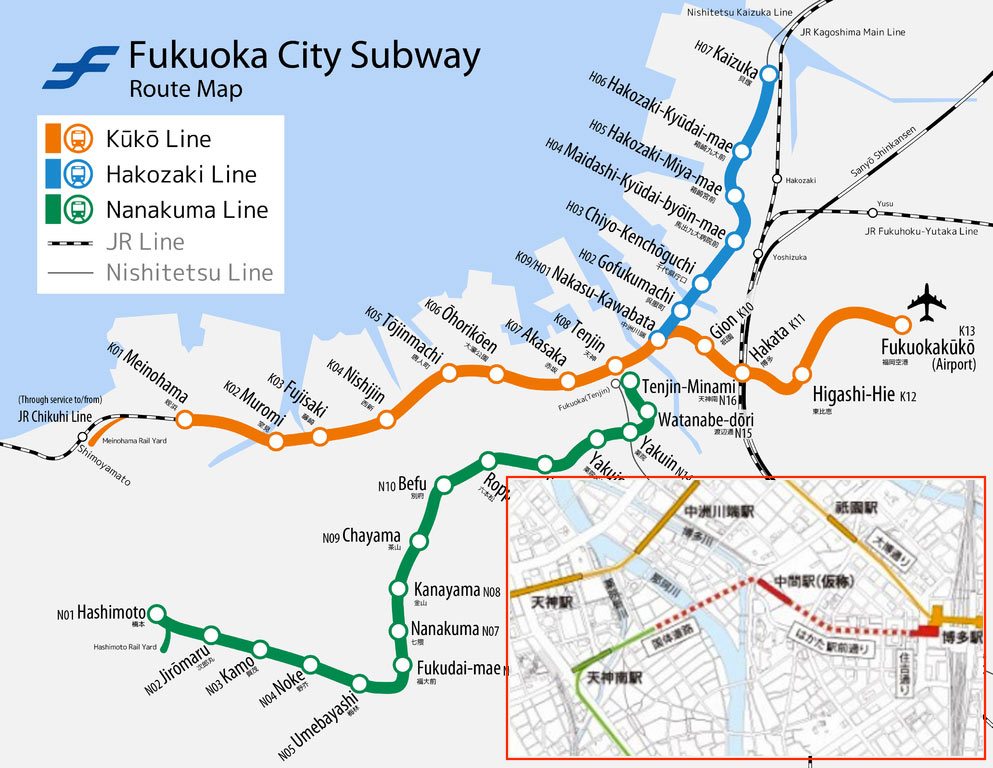Sinkhole disrupts routine in Fukuoka, Japan 09 Nov 2016
Details of exactly the causes and circumstances of the event are limited, but the images of the sinkhole in Fukuoka city in Japan are dramatic. A full-width section of a five-lane street in the city collapsed into a huge sinkhole that started to form at about 5am local Japan time on Tuesday morning 8 November.
Sinkhole recovered and repaired in one week
Recovery of the sinkhole that appeared in the street above metro tunnelling work in Fukuoka on Tuesday 8 November was recovered, repaired and reopened to traffic just a week later at 5am Tuesday 15 November, ready for the city’s rush hour traffic. Workers mobilised quickly to fill the 30m wide x 15m deep collapse zone with concrete and stabilise the situation. Mayor of the city Soichiro Takashima apologised in a statement for the "great trouble" and thanked workers for their efforts and initiating an investigation into the cause of the incident. Meanwhile, recovery, rebuild and continuation of the excavation works under the surface to complete the metro link to the main railway station continues.
The collapse began as two isolated collapses under the street that eventually joined to create a sinkhole about 30m wide and 30m long and 15m deep.
Given the early hour of the morning, traffic and pedestrian activity was limited resulting, fortunately, in no fatalities or serious injuries. High rise buildings on either side of the street, and at the perimeter of the sinkhole, also appear to be unaffected, although the collapse did disrupt power, water and gas supplies and underground metro line services in the area.
Fukuoka is currently excavating a new metro line in the city and the sinkhole is associated with excavation on the approaches to Hakata mainline railway station (Fig 1 insert). Workers were reported working underground in the running tunnels at the time of the progressive collapse, but were on break at the time and managed to withdraw to safety as indications of tunnelling instability became evident.
Speculation in news reports is that the collapse could have been caused by leaks from ageing water supply networks and the high groundwater table of the coastal seaport area of Hakata. Many water supply tunnels were built in the 1970s, say experts, when Japan was undergoing rapid economic growth and quality of materials and construction methods were not of the standard they are today and are deteriorating to poor structural integrity over advancing years.
“It is a growing social issue,” said one expert in a local national newspaper, adding that the number of sinkholes associated with sewer pipeline collapses across Japan has grown to 4,000 to 5,000 per year. Increasingly heavy rainfall and the high local watertable add further to deterioration of the water supply lines and create greater challenge and risk for new tunnel excavation works in the same underground environment.
City authorities evacuated buildings and offices in the immediate area of the incident, fearing further instability of their foundations by the sinkhole that rapidly filled with water continuing to flow from the ruptured water supply lines. Services at several banks and offices in the city and its airport were interrupted by communication and power cables broken by the incident.
Local rewspaper reports have looked back and reported previous tunnel collapse sinkholes including a smaller collapse sinkhole associated also with work to extend the Nanakuma Line in Fukuoka in October 2014. Others were associated with sewer and water supply tunnel excavations. None reported any serious injury or loss of life as a result.
While dramatic when they occur, the event of sinkholes is very rare compared to the amount of tunnelling being excavated under the cities of the world at any single point of time and without any incident and frequently without any awareness of the activity by those using the urban environments above.
Sinkholes and collapses can occur also above all types of tunnel excavation including TBM headings and open-face methods. The circumstances that cause or lead to failure of a tunnel heading are complex and range from human error to poor quality of construction to changed geological conditions to ground conditions seriously altered by other events such as leaking water or sewer pipelines that have been leaking over years or perhaps caused by the activity of the new tunnel works in the area.
The actual circumstances that surround the collapse in Fukuoka will take some time to be reported officially.
The Fukuoka subway system has three underground line and is operated by the City Transportation Bureau (Fig 1). Construction of the 1.6km underground extension to link the terminating Tenjin-Minami station on the Nanakuma Line to the main Hakata Station under the city centre began in December 2013 and is due to be completed and in service in 2020.
References
- Search result of other tunnel collapse reports on TunnelTalk
- Symptoms of the collapse syndrome – TunnelTalk, June 2010
|
|
|
|
|
Add your comment
- Thank you for taking the time to share your thoughts and comments. You share in the wider tunnelling community, so please keep your comments smart and civil. Don't attack other readers personally, and keep your language professional.





